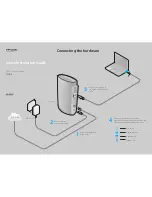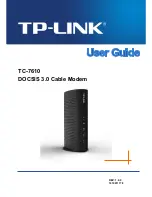
26
Universal Cellular Communicator
Contact ID/SIA transmission sequence on cellular data network
If phone numbers (prefixes on the
PTM
page) have been entered on the Console, the communicator switches the calls to these
numbers to the cellular data network.
When an event occurs, the burglar alarm panel engages the phone line.
The dial tone is simulated.
The burglar alarm panel dials the number of the central station. Make sure that the panel inserts at least a 1 second pause or
checks for the dial tone before dialling the number.
The communicator sends the handshake tone required for Contact ID or SIA.
After it receives the handshake, the panel transmits the alarm events.
The communicator decodes and transforms the message into a data packet and sends it to the central station receiver via
the cellular data network.
The receiver recognises the event and sends an acknowledgement (kiss-off) to the communicator, which forwards the kiss-
off signal to the panel.
After the communicator has generated the kiss-off signal, if no other events are to be sent, the panel hangs up, or sends the
next event.
SMS dialer
In SMS dialer mode, one or more previously programmed numbers (up to 8 of the numbers in the Phonebook) are sent the SMS
(max. length 70 characters), associated with the events listed in table 10 on page 23.
An SMS is sent when one of the above listed events occurs, for which an SMS has been programmed and at least one number
has been assigned.
Voice dialer
In voice dialer mode, one or more previously programmed numbers (up to 8 of the numbers in the Phonebook) are sent up to
3 pre-recorded voice messages. Up to 150 voice messages can be recorded, of up to 6 seconds each. The messages can be
associated with the events listed in table 10 on page 23.
A voice call is made when an event occurs for which a voice message has been programmed and which has at least one phone
number. In this case, the communicator executes the procedure indicated below.
1. The communicator dials the number and makes the call via GSM.
2. The communicator checks that the number is not engaged and that there are no problems with the GSM network before
proceeding, otherwise it terminates the call and tries step 1 again, for the programmed number of times (
Call attempts
in
par. “
SMS/Voice Calls
” on page 46), after which it concludes the call cycle. If the event has been programmed to call
multiple numbers, they are called in sequence. This prevents the system calling an occupied number several times in a few
seconds.
3. The communicator waits up to 60 seconds for the called number to answer. If the number answers, it goes to step 4,
otherwise it hangs up and tries step 1 again, for the programmed number of times (
Call Attempts
in par. “
SMS/Voice
Calls
” on page 46), after which it concludes the call cycle.
4. The communicator plays the message for the channel in alarm: the call is terminated only after the message has been received
or the called user presses
on his phone, if the
Call Confirmation
option is enabled (see “
SMS/Voice Calls
” on
page 46).
If multiple events requiring different messages to be sent to the same number have occurred, the messages are played in
sequence, each for the programmed number of
Repetitions
(see “
SMS/Voice Calls
” on page 46), during a single call, to avoid
calling the same number multiple times.
If, at the end of the call cycle, the input which activated the communicator is still in alarm, the above procedure is not repeated.
The input which tripped the call cycle must first be deactivated and then activated anew before a new cycle of calls is tripped.
Содержание B3G-220
Страница 1: ...220 Series Universal Cellular Communicator Installation manual...
Страница 61: ...220 Series 61...
Страница 62: ...62 Universal Cellular Communicator...
Страница 63: ......
















































